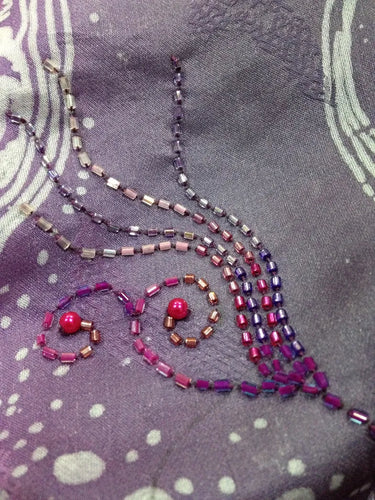
CUTDANA EMBROIDERY
Cutdana work refers to using stones that have been cut at specific angles in order to facilitate the reflection of light. These stones are sewn into the fabric with thin threads to create different kinds of patterns and designs. Cutdana work, due to the intricate detailing that goes into creating the outfit, is usually worn for more formal occasions as the work is considered to be rich and heavy. This is why most outfits with this style of embroidery on them is considered to be formal wear and is priced slightly higher than an average outfit.
Cutdana embroidery originated in the royal homes of India’s various kings and queens who lived lavish lifestyles. The very idea of sewing stones onto clothes was a means to differentiate between those belonging to royal or affluent homes from those belonging to the middle and lower classes who wore plainer clothes with hardly any embellishments.
Cutdana embroidery has two types of recurring patterns or motifs. The first is derived from nature so patterns pertaining to the same fall under this category. This includes symbols drawn from flora such as leaves, vines, creepers, flowers and even trees as well as symbols drawn from fauna such as peacocks, hummingbirds, animals and so on. Due to the intricate nature of this style of embroidery, it is predominantly found in wedding attire. Bridal lehengas as well as bridal sarees are most often decorated with stones that are meant to sparkle and set off light during the wedding ceremony. These clothes are also known for being extremely heavy, not just in terms of the nature of the work done on them but also in terms of the overall weight of the garment.
Cutdana work is used on a large scale by designers throughout India. Almost every garment seen on the runway sports this form of embroidery and due to the fact that the wedding industry in India is a thriving and ever evolving, this style of embroidery has not lost its charm since its inception. Gowns and dresses with stone work on them are a common sight on the red carpet abroad. The stone work in their case, however, does not always follow a set pattern or a set of rules in terms of the motif and is usually abstract, focusing on highlighting the garment itself as opposed to bringing a lot of attention on the stone work.





